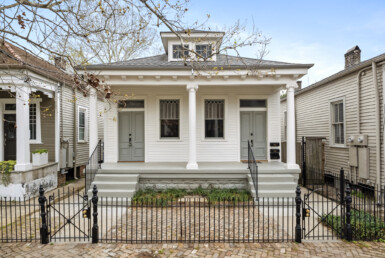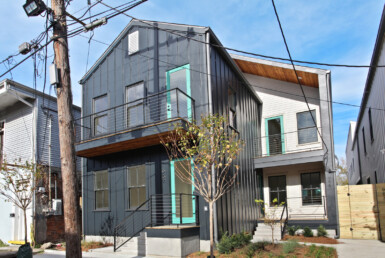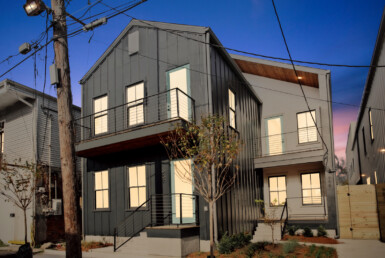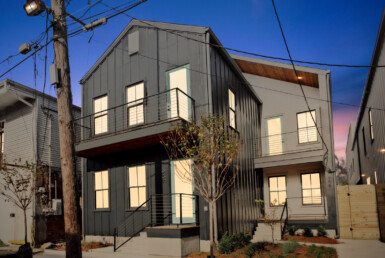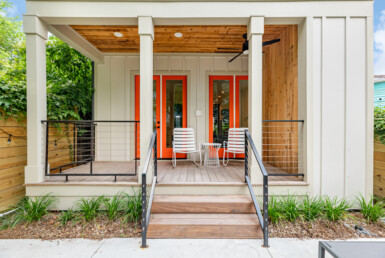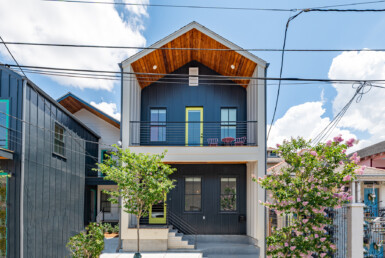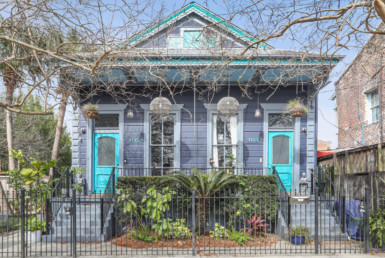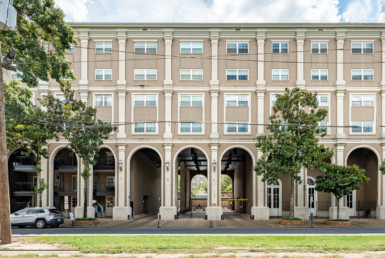Lower Garden District
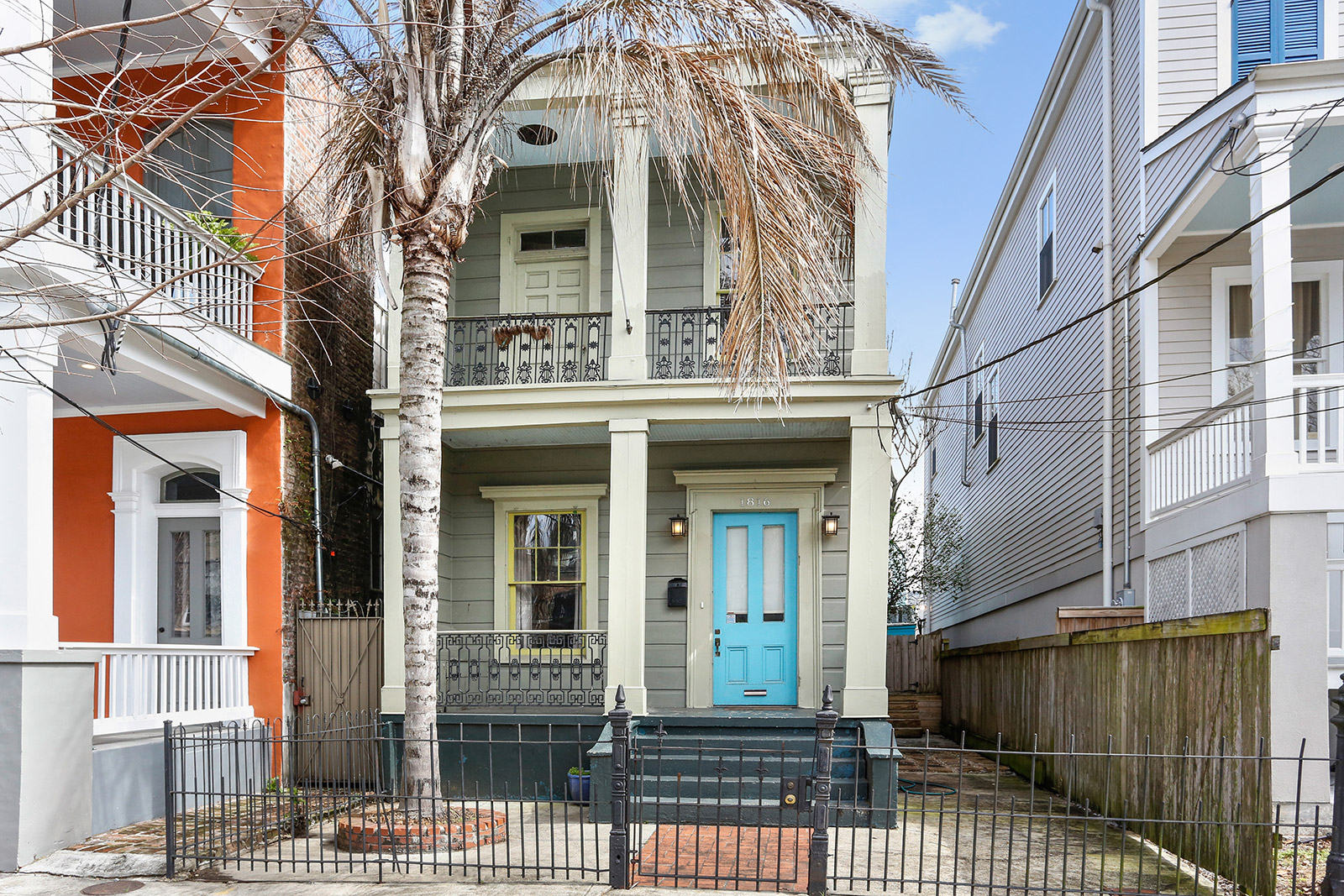
Stroll under the oaks of Coliseum Square or any of the smaller parks in the Lower Garden District and you’re likely to find locals playing with their dogs or reading on the grass. Annual neighborhood festivities include a Christmas party for the police and fire fighters, Easter egg hunts, a Halloween party and a Spring House Tour and Festival. Walk down lower Magazine Street, the neighborhood’s commercial center, and feel the energy as antique shops give way to contemporary design studios, offbeat clothing stores, neighborhood art galleries, restaurants, grocery stores, and even an old-world barber shop operated by Irish barber Aidan Gill, who offers Guinness and whiskey with his hot towel shaves.
Those who live on the second or third floors of Magazine Street’s commercial buildings can see the skyline of the Central Business District and the lights of the Mississippi River Bridge just a few blocks away. Laid out in 1806-07 by Barthelemy Lafon as an open, semi-urban system of interrelated parks with basins, fountains and canals, the Lower Garden District was “one of the earliest expressions of the Greek Revival to appear in New Orleans,” according to noted architect, the late Samuel Wilson, Jr. The streets still bear the names of the nine muses of Greek mythology, and many of the mid-19th-century Greek Revival and Italianate homes built in this classical setting remain. During the Depression, many of the mansions turned into boarding houses and apartments. The neighborhood declined further as residents moved to the suburbs after WWII to take advantage of lower government insured mortgage interest rates that were not available to most inner city homebuyers.
The construction of the Mississippi River Bridge in 1956 fostered still more decline, as parkland became bridge ramps and commuter traffic clogged the streets. In 1970 young “urban pioneers” moved into the neighborhood, attracted by potentially fine homes in a park setting. When the State of Louisiana announced plans for a second bridge between Race and Felicity streets, these pioneers fought the proposal, placed the neighborhood on the National Register of Historic Places, and defeated the second span. Thanks to their untiring efforts, the Camp Street bridge ramp was finally removed in 1994. Newcomers continue to work to preserve this rare example of an intact Greek Revival neighborhood. The 2000 Census showed that the Lower Garden District grew in population between 1990 and 2000. Many of the new arrivals were young first time homeowners, drawn by affordable houses and the proximity to downtown.
Courtesy of the Preservation Resource Center of New Orleans.


